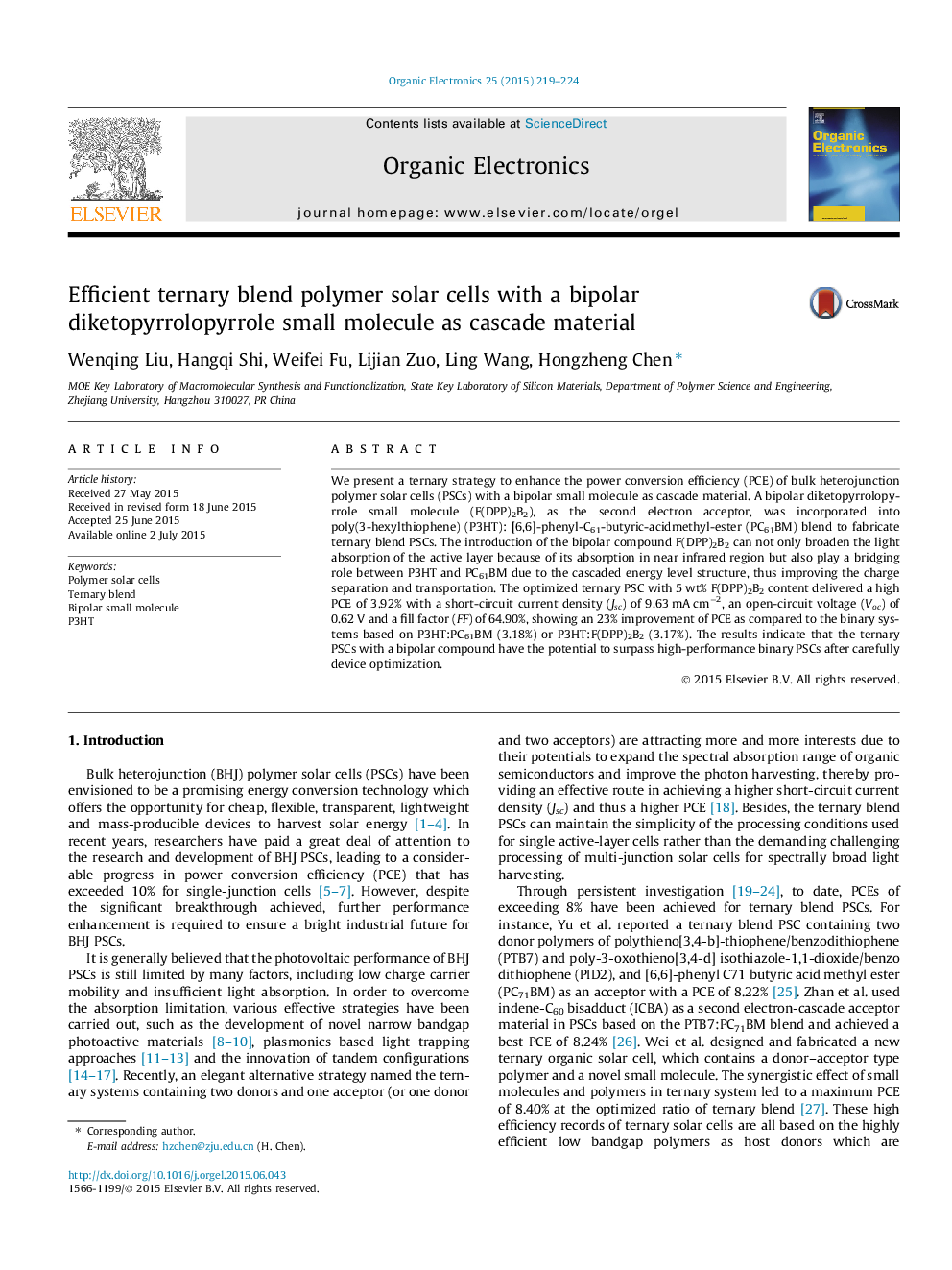| Article ID | Journal | Published Year | Pages | File Type |
|---|---|---|---|---|
| 1263644 | Organic Electronics | 2015 | 6 Pages |
•A bipolar small molecule (F(DPP)2B2) was incorporated into P3HT:PC61BM blend to fabricate ternary PSCs.•F(DPP)2B2 can act as an efficient cascade material for the ternary PSCs.•An enhanced light absorption from 550 to 700 nm is achieved.•The optimized ternary PSC delivered an 23% improvement of PCE as compared to the binary PSC.
We present a ternary strategy to enhance the power conversion efficiency (PCE) of bulk heterojunction polymer solar cells (PSCs) with a bipolar small molecule as cascade material. A bipolar diketopyrrolopyrrole small molecule (F(DPP)2B2), as the second electron acceptor, was incorporated into poly(3-hexylthiophene) (P3HT): [6,6]-phenyl-C61-butyric-acidmethyl-ester (PC61BM) blend to fabricate ternary blend PSCs. The introduction of the bipolar compound F(DPP)2B2 can not only broaden the light absorption of the active layer because of its absorption in near infrared region but also play a bridging role between P3HT and PC61BM due to the cascaded energy level structure, thus improving the charge separation and transportation. The optimized ternary PSC with 5 wt% F(DPP)2B2 content delivered a high PCE of 3.92% with a short-circuit current density (Jsc) of 9.63 mA cm−2, an open-circuit voltage (Voc) of 0.62 V and a fill factor (FF) of 64.90%, showing an 23% improvement of PCE as compared to the binary systems based on P3HT:PC61BM (3.18%) or P3HT:F(DPP)2B2 (3.17%). The results indicate that the ternary PSCs with a bipolar compound have the potential to surpass high-performance binary PSCs after carefully device optimization.
Graphical abstractFigure optionsDownload full-size imageDownload as PowerPoint slide
